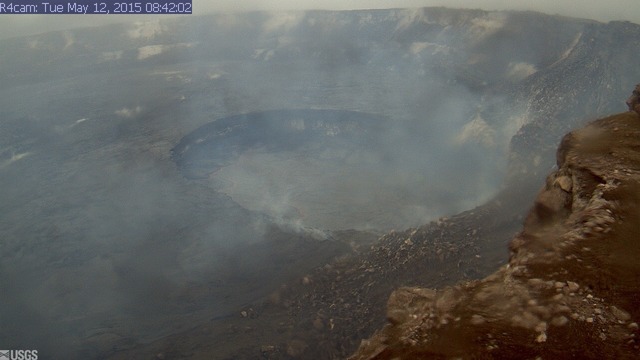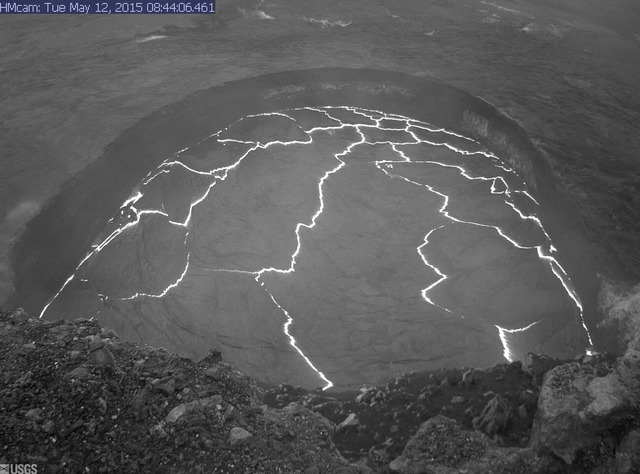Kilauea Volcano’s summit remains in a period of slow deflation, the U.S. Geological Survey reported Tuesday morning. ADVERTISING Kilauea Volcano’s summit remains in a period of slow deflation, the U.S. Geological Survey reported Tuesday morning. The summit lava lake remained
Kilauea Volcano’s summit remains in a period of slow deflation, the U.S. Geological Survey reported Tuesday morning.
The summit lava lake remained about 10 yards below the rim of the Overlook Crater, which is located on the floor of Halemaumau Crater, as of Monday afternoon, the survey’s Hawaiian Volcano Observatory scientists said. The lake has not sent lava onto the floor of Halemaumau during the past 48 hours. It had been spilling over the crater rim periodically since April 21.
Data from tiltmeters positioned at the summit on Monday also showed the volcano continued to deflate. During inflation, magma rises into the summit reservoir, according to the observatory. The summit reservoir enters the deflation portion of the cycle when the magma moves laterally into a rift zone and either erupts or is stored there.
Seismicity remained elevated Tuesday morning beneath Kilauea’s summit and upper East and Southwest Rift Zones.
The tiltmeter, which is used to measure tiny changes in the slope angle or “tilt” of the ground, on the north flank of Puu Oo recorded very minor fluctuations in tilt during the past 24 hours. Scientists also said they observed no active flows within the crater, however, nighttime incandescence suggests lava remains present in the collapsed pit west of the main crater.
Breakouts along the June 27 lava flow remained active within 5 miles of Puu Oo Tuesday morning. Most of the flows were located within 2 miles of the vent and being fed by a breakout that occurred Feb. 21, according to the observatory.
The U.S. Geological Survey Hawaiian Volcano Observatory on March 25 downgraded its alert level for Kilauea Volcano from a “warning” to a “watch.”






